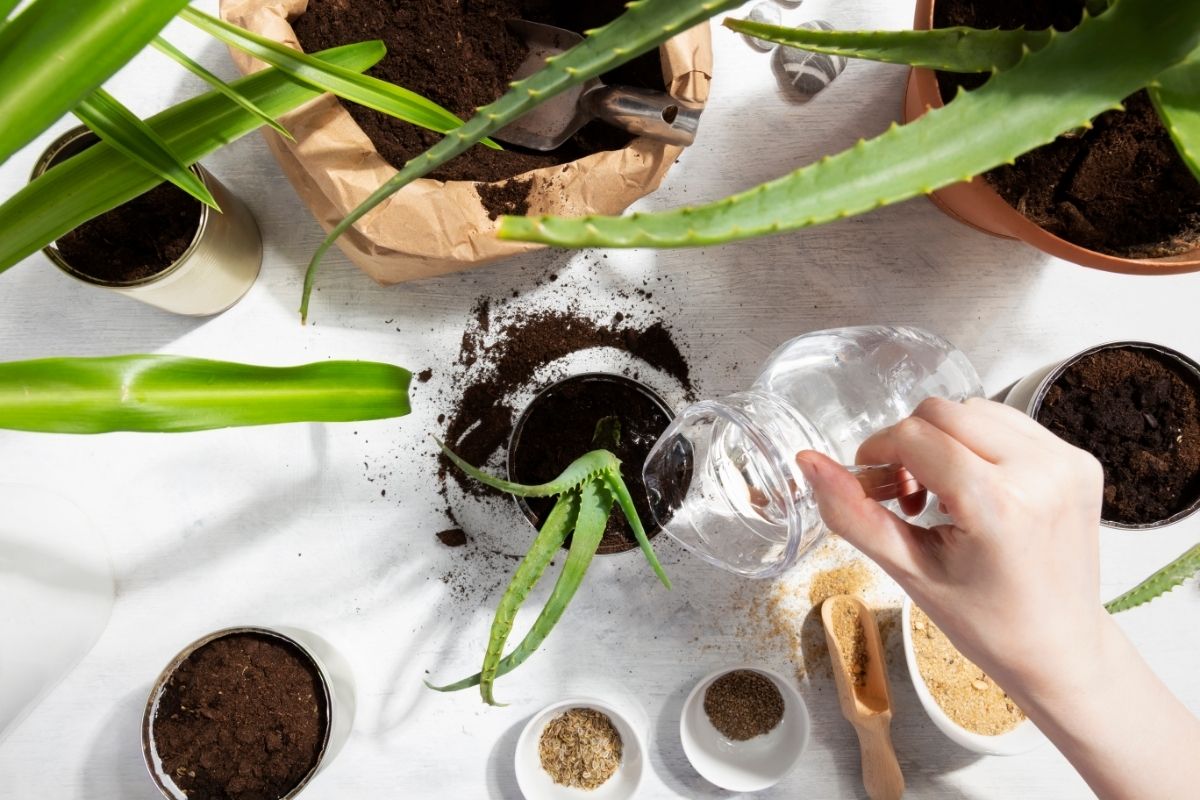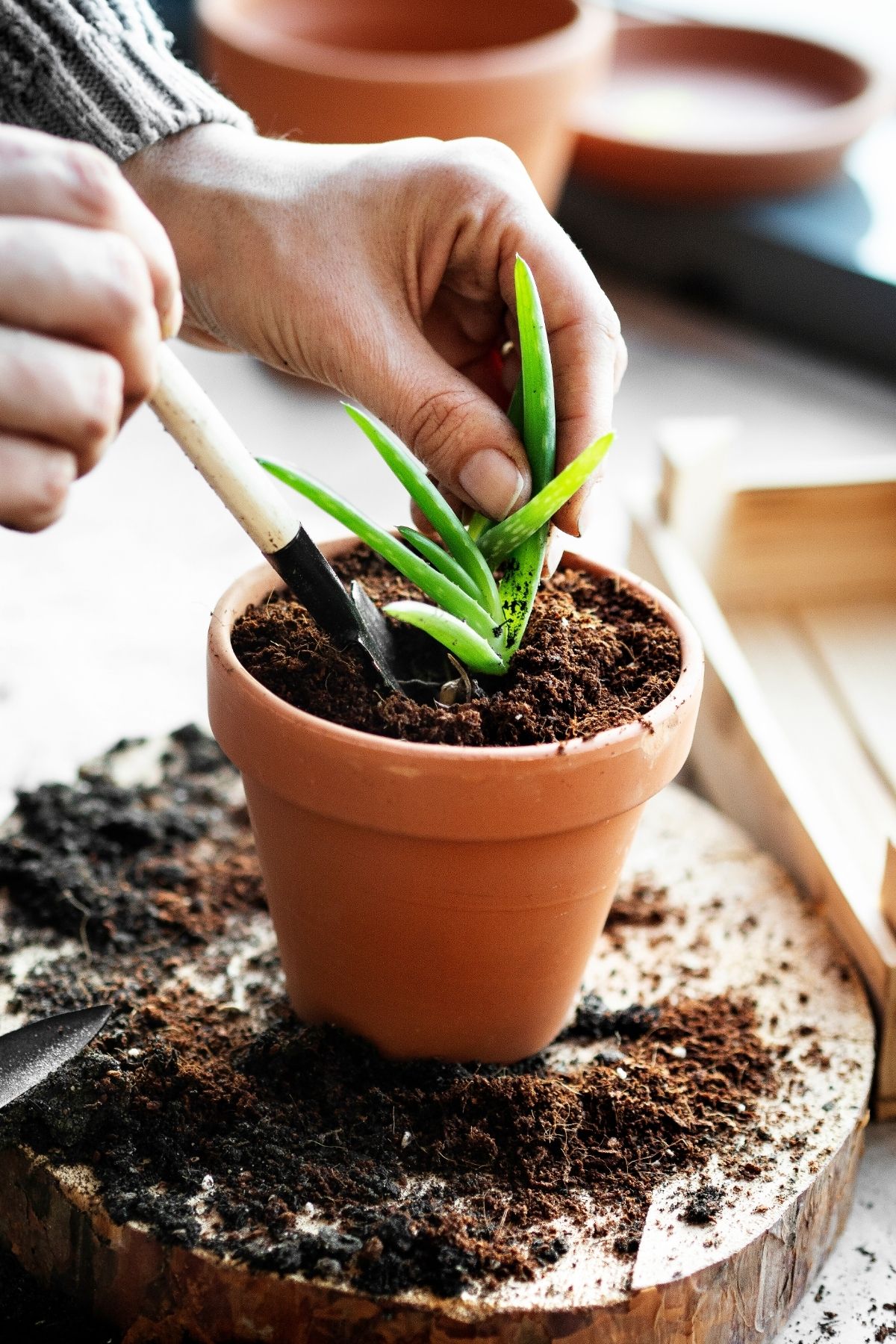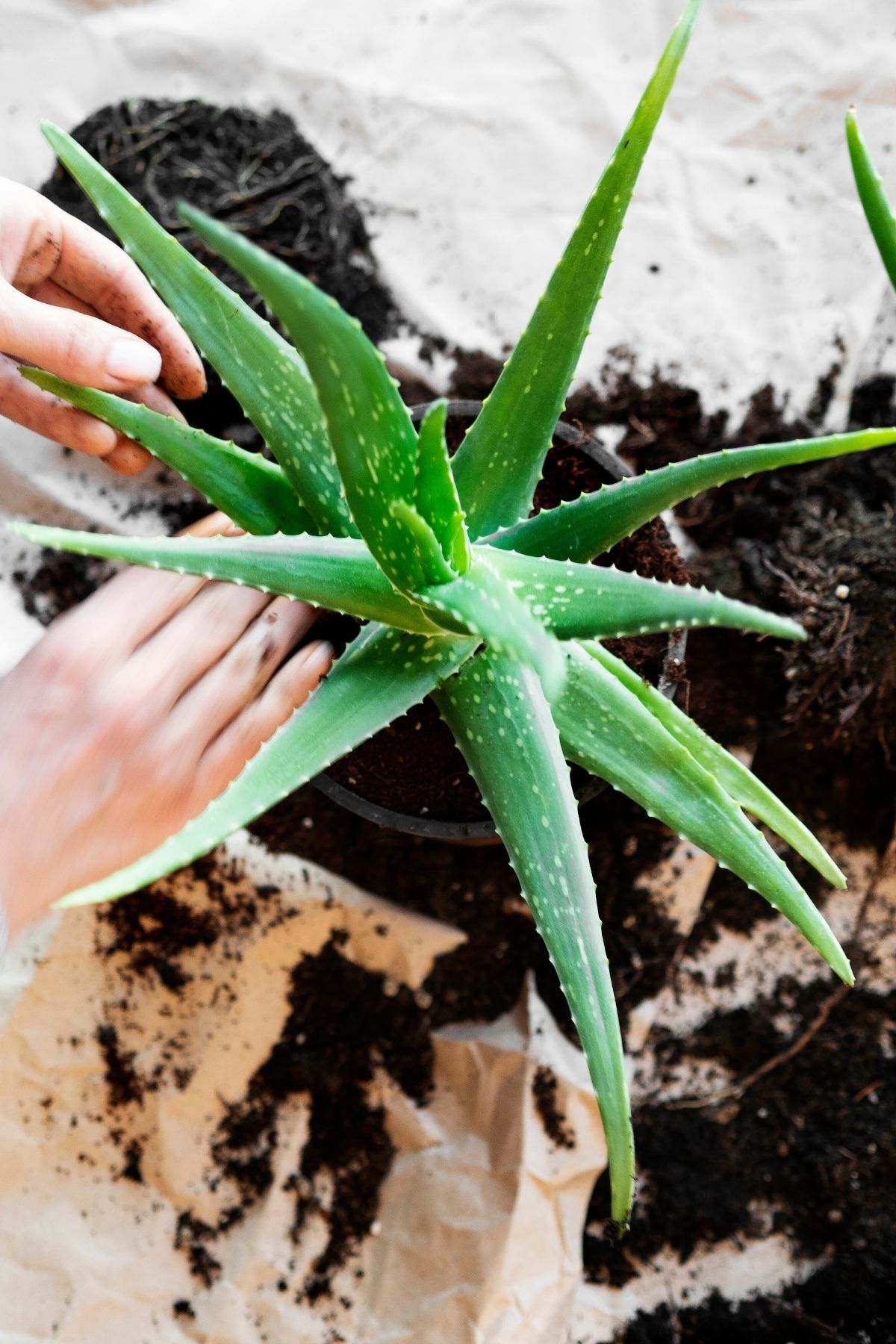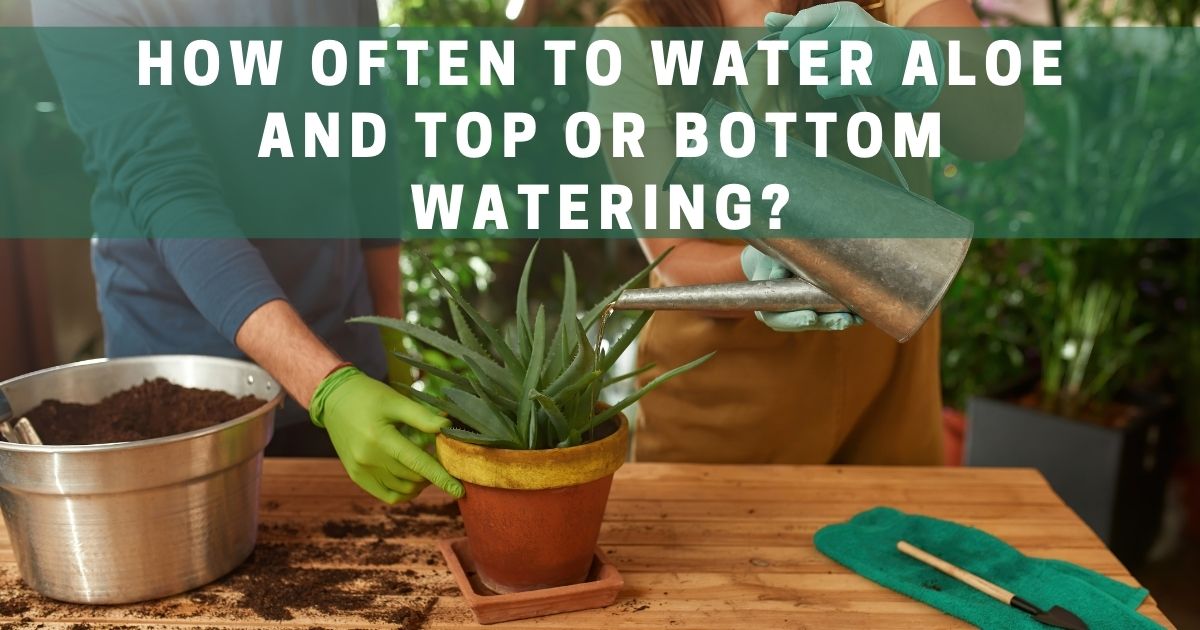The aloe vera plant is an easy and very attractive succulent to grow that makes for a fantastic indoor companion. But how much water do they need? The main caution regarding how often to water aloe vera plants is that an aloe vera should not get too much water.
They are also quite useful as the juice from their leaves can be used medicinally for many uses. In addition to medicinal qualities, aloe plants are also savila plants, meaning they have a mildly intoxicating effect, but we most likely will not get high smoking aloe vera.
Here’s how to grow and care for these lovely plants in your home!

Watering Aloe Vera
Water aloe vera deeply, but fairly infrequently; otherwise, the plants are subject to rot. A good rule of thumb is to pinch the soil with your fingers. If the soil is still wet, Your aloe vera plants are not ready for watering.
Is Aloe a succulent plant?
Yes indeed. The aloe vera plant stores water in its leaves and is therefore considered succulent in nature. This is why you should be careful not to overwater your aloe vera. Plenty of water moves in and through the aloe vera leaves, and too much water will undoubtedly lead to rot.
Actually, to be technically correct, aloe vera does not have leaves but instead has green shafts that protrude from the ground, but many of us do refer to them as leaves.
Do you Water Aloe Vera From Top or Bottom?
You water aloe vera from the bottom. The goal of your watering should be to slowly pour the water into the soil and drain the excess through the drainage holes at the bottom of the container.
You want the roots of your aloe plant to be plenty damp, but at the same time, you don’t want to soak them. By aiming the water at the bottom of the plant, the roots will get their necessary water and hopefully develop strong and healthy, and that’s what you really want.
What Should you do Before Planting an Aloe plant?
We’ll talk more about The best soil for aloe vera in the next section, but for now, we’ll just say that obtaining a succulent mixture of soil or cacti potting soil works best. Ensure the drainage holes are clear and open, as this is critical. As to what kind of pot to use–terra cotta works the best.
It’s generally not necessary to repot your aloe plant into a larger pot unless the plant grows so large the pot may tip over. One primary concern if you are going to grow your aloe plants indoors is selecting the right location.
Our aloe plants need a minimum of six hours of sunlight per day. We want our aloe plants to retain their compact shape; without receiving enough sunlight, the stalks will stretch to obtain that light. Not only will the plant no longer be compact, but our plants may topple over as the stalks stretch and weaken.
There is no real substitute for natural sunshine, but if the plants do not get enough natural light, they can be supplemented with artificial light. We need to be aware, however, that it may require 14 to 16 hours of artificial light a day to provide the equivalent of six hours of natural sunshine.
Also, be wary of micro-climate temperature fluctuations.
An aloe plant does well with an indoor temperature of roughly 75 degrees and nighttime temperatures as low as 50 to 60 degrees. As a succulent, your aloes will grow best if there is a 10-degree swing between the daytime and the nighttime temperatures.
However, in most homes, there can be significant swings within the house, regardless of what the thermostat is set at.
A window directly facing the sun may expose our aloe plant to too hot a temperature during the day, and in the winter, just because a plant is sitting near a window, it may be entirely too cool for the plant’s comfort. Aloe plants that experience too much of a chill will quickly discolor.

Aloe Soil Requirements
As we mentioned earlier, succulents grow best in potting mixes for succulents or cacti. Do not use ordinary gardening soil for your aloe plants. Many manufacturers make succulent soils, and they are often the best bet for your aloe.
The ideal mix should contain perlite, lava rock, chunks of bark, or preferably all three. The idea is to provide a rocky environment with enough soil and nutrients for the plant to take root but, at the same time, drain easily.
However, layers of gravel, clay balls, or any other type of drainage material are not necessary and simply take up space within the pot that the roots need to grow strong.
Although it’s totally optional, many of us, when planting aloe vera, also include a light dusting of hormone powder which can be obtained from any gardening supply store. Rooting hormones will assist in making sure our aloe plants take root quickly. In addition, rooting hormones are relatively cheap and are a good investment.
How Often to Water Aloe?
Our aloe vera only needs watering occasionally. In the summer, typically, we might water our plants about every two to three weeks. Then, as we mentioned earlier, use the pinch test to see whether the soil is still wet or not.
In the winter, we want to water our aloe vera even less. The rule of thumb here is that if we water our aloe plants once every two weeks in the summer, to double that frequency of watering to once every four weeks in the winter.
The reason is that our aloe plants tend to go dormant in the winter and thus need much less water.
When we water in the summer, some excess water will run out beneath the pot. That’s to be expected, but be sure and let the pot sit in that excess water for around 10 to 15 minutes before dumping any excess water. This way, the soil absorbs as much water as possible.
At the same time, it is imperative that our aloe plants do not sit in water for a long time; otherwise, they will be overwatered and tend to rot.
Other Aloe Plant Care Tips
Our aloe plants are slow-growing, but they tend to outgrow their pots after two or three years and need repotting.
When repotting, Select a new planter pot at least 1.5 times wider than the current pot but not necessarily deeper. The reason for the latter is that the roots of our plants are relatively shallow.
It is essential to recognize that, like all plants, aloes are subject to pests. The most common are aphids, mites, and occasionally, snout beetles.
We should inspect our aloe plants monthly, particularly if they occasionally are taken outside the house for a bit of sunshine.
If we find insects on our plants, without question, we should apply an excellent insecticidal soap, and in the rare case where we encounter snot beetles, as many of us grow our aloe indoors, physically removing the beetles is effective, but we don’t want to wait too long, as if the beetles lay eggs in your aloe vera stalks, they are likely to kill the plant.
Signs an Aloe is Under or Over Watered
As mentioned earlier, the main problem with growing aloe vera is watering too much. However, aloe vera can definitely be underwatered as well. Signs that our plants are underwatered include yellowing of the leaves, browning of the leaf tips, drying of the leaf edges, and brown spots.
In addition, the roots will become brittle due to overwatering.
On the other hand, while many of the symptoms of overwatering and underwatering remain similar, we will definitely be able to distinguish overwatered plants by their tell-tale water-soaked spots that are soft and mushy.
Sometimes the problem is neither overwatering nor underwatering. For example, if we are careful and neither overwater nor underwater yet the leaves of our aloe plants look droopy, it could be because our plants are not getting enough light.

Key Takeways
Aloe are very attractive plants that are generally quite easy to take care of. The aloe plant is not only medicinally precious, but the plants are beautiful in their own right.
Be sure our aloes get enough light and water carefully, and they will generally grow without too much additional care.
However, scrutinize the plants at least once a month for signs of watering distress (underwatering or overwatering) and let the plants rest in the winter months with significantly less water.
Also, if we take our aloe plants outside for a bit of sunlight, be sure and check afterward that they have not inherited any pests which could affect the plant.
Caring for aloe plants is not exactly rocket science, but there are essential things to consider.
